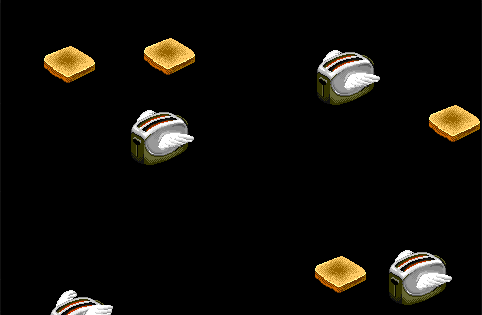Probably the most famous screensaver software of the 90’s on windows. Something i instantly remembered seeing on the only computer screen we had standing in the living room, so seeing it again after so long in an exhibition was a nice nostalgic encounter.
Flying Toasters was released in 1996, designed by Jack Eastman and Patrick Beard and developed under Berkeley systems. The name gives it all away, classic toasters with wings fly across your black computer screen along with pieces of toast. In relation to the New Institute Exhibits and Flying Toasters being a screensaver software, in my opinion it leans more towards Act 3, FAUX. loosely related in the sense that the software changes the pixelated screen surface into a temporarily living scenario of an engineer’s imagination, sparked most likely by spending too many hours awake at night programming screensavers in the first place. as simple of a concept it may be, the visual aspects made huge impacts on subcultures within and outside of the programming world.
During the trip to the exhibition where flying toasters was screened among other screensavers, I noticed that not much detail was given about these screensavers. they filled up a dark space wall to wall and gave the impression one was walking through a slice of 90’s time-space. What’s fascinating about these old modulated screensavers, initially designed to prevent phosphor burns in CTR and plasma monitors, is their apparent animation style that provided hours of background distraction. The “designing the Surface” exhibition showed many different surfaces which are manipulated in many forms. The screensaver room felt the most intriguing because the screens weren’t just being displayed, they still served their adapted function in a very subtle manner, simply to distract and entertain. Having flying toaster, pipes 3D, aquatic realm, Geo Bounce, lasers and many other software lined up on big screens gave me a bittersweet feeling of how dead 90’s computing is in the progressive new Century. Yet there will always be an interest in whatever people feel nostalgic relevance for.




